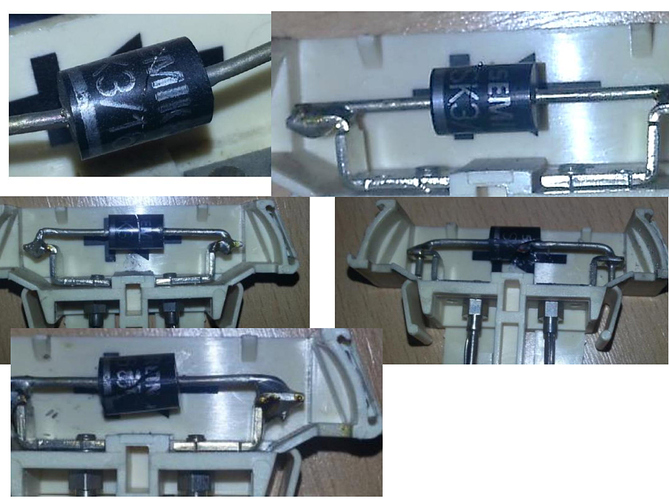SOURCE
https://www.eng-tips.com/viewthread.cfm?qid=374092
The above URL contains the entire discussion. Below is a snippet.
QUESTION
We have had some faults (last year like 3 in total 60 equipment) due to a diode failing in open circuit. It is on top of a DC control circuit just after the MCB, and has the function of avoiding reverse supply to upstream circuits.
The diode is 3A RMS and after checking we have seen some of them fissured, but not failed yet (see pictures). The diode is sized for the current but we can not discard some incorrect maneuver in maintenance or transient that could be causing an overcurrent.
As an example, we have a similar diode in other older equipment but sized to 10A (with exactly same control circuit downstream) that has not given problems in 8 years.
Before changing the remaining to the 10A one, I would like to check some of your opinions about the possible causes of package fissuring. My previous idea was that the most common fault mode for a diode was short circuit
but it seems not occurring here.REPLIES
Comcokid
Silicon diodes fail in short circuit. To fail them in open circuit there needs to be a pulse big enough to blow them apart.
The diode appears to be a Semikron SK 1/16 which is a 1600V with Ifrms of 3 Amps (absolute maximum continuous) but a Ifav (more of a normal operating current) of 1.45 Amps (85 C with 10 mm lead length on each side of the body).
Just like Police Chief Martin Brody said in Jaws “I think we’re gonna need a bigger boat”, I think you need a bigger diode.
